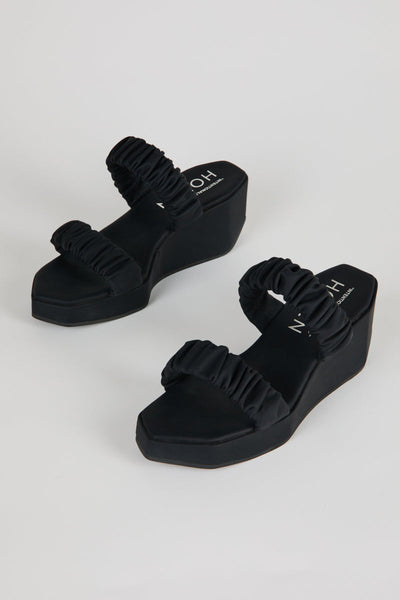Even though nylon and leather are some of the most common materials for bags, the two couldn’t be more different from one another. Leather is often regarded as the best material for bags with its long lifespan, authenticity, and soft to the touch texture. Nylon on the other hand…well some people think that it’s just a polite word for plastic. As is often the case, the distinctions are much more nuanced in actuality.
When it comes to nylon vs leather bag, there are some major differences to consider in terms of price, style, value and sustainability.
Let’s see how nylon and leather compare when they are considered in regard to some of the biggest factors that one has to consider when finding a new bag.
Nylon vs Leather: Value
When it comes to initial price, leather bags may seem expensive. However, if one thinks about a leather bag as an investment, rather than a piece of fast fashion—that quickly changes. Sure, it costs more, but over time leather bags prove much better value for the money.

Is nylon a good material for bags? Well…that depends on what you look for in a bag. When comparing price points, nylon comes in far below leather as a cheaper, more accessible alternative. Unfortunately, with that cheap price, comes a short lifespan. Nylon bags are prone to tears or rips and often need repairing or to be flat out replaced after only a few months.
Nylon vs Leather: Quality
Authentic leather is warm, complex, and delicate to the touch. Plus, it’s durable as hell. Leather is renowned across the fashion world, and considered one of the best materials for bags, because of its ultra-smooth, buttery texture and its polished, expensive looking finish.
Nylon products, on the other hand, often feel scratchy and unpleasant, with a cold exterior. Made of threaded thermoplastics melted into fabrics and shapes, nylon is known as a tough, elastic, and coarse fabric best suited from products that require extreme durability like hot air balloons, parachutes, and the hosiery of working people. However, this reputation changed when nylon tights hit the market. In the 1930s, when depression era scarcity made silk and cotton too expensive for many American households, nylon tights were a much-celebrated scientific breakthrough.

Nylon vs Leather: The Environment

Source: India toxic tanneries
Leather is a fabric made from the hide from an animal. Some luxury brands pride themselves in using only lambskin leather—or, translated into less fancy terms, the skin of baby sheep. Needless to say, this product has an enormous environmental footprint and threatens the sustainability of ecological systems with its extractive demands. Tanning leather, and removing animal by-products from the raw material, requires toxic processes that use “chrome” a serious carcinogen which often spills into water sources.
While nylon is a much less environmentally destructive fabric to produce, it also comes with a host of problems. Nylon is not biodegradable, and so, anything made from the material will persist in the environment indefinitely. Bags made out of nylon, and other man-made materials, are likely to fill up landfills as soon as they go out of style. Some brands, however, are combatting this quality by working with recycled nylon to give discarded materials a second chance at life.
So? Is Nylon a good material for bags?

Leather is celebrated as a top luxury material for bags. Nylon, on the other hand, has an admittedly bad reputation. BUT! Before you condemn all plastic based fabrics, it’s important to remember that polymer fabrics come in all shapes and sizes. Some expertly crafted work can use scientific magic to make a faux leather. Which leather is best for bags? It’s all about the intention brands put into their craft. While some old-school handbag companies would rather die than switch from real leathers that require animal suffering, innovative and modern brands are seeing that the lives of animals don’t have to be sacrificed for quality.
Nylon vs Leather: Conclusion
When it comes to choosing the best material for bags, remember, it’s not just nylon vs. leather, it’s also sustainability vs. waste and kindness vs. animal cruelty.
Luckily for the twenty first century shopper, modern science has advanced to such a point that it is now, there is now an unexpected answer to the much-asked question: which leather is best for bags? If you care about animals more than tradition—that answer just might be…a faux “leather” made out of a recycled man-made material like nylon! If you need inspiration, look no further than Hozen’s new Cinch Backpack which is made of 90% recycled plastic but feels as luxurious as real leather.

If you still hesitate with eco-friendly bags material. Then visit our latest blog series where we explain more detail about leather alternatives.
What Is Eco Leather? And Why You Should Have It in Your Closet?
What Is Vegan Leather? What Are Their Benefits to The Environment?





